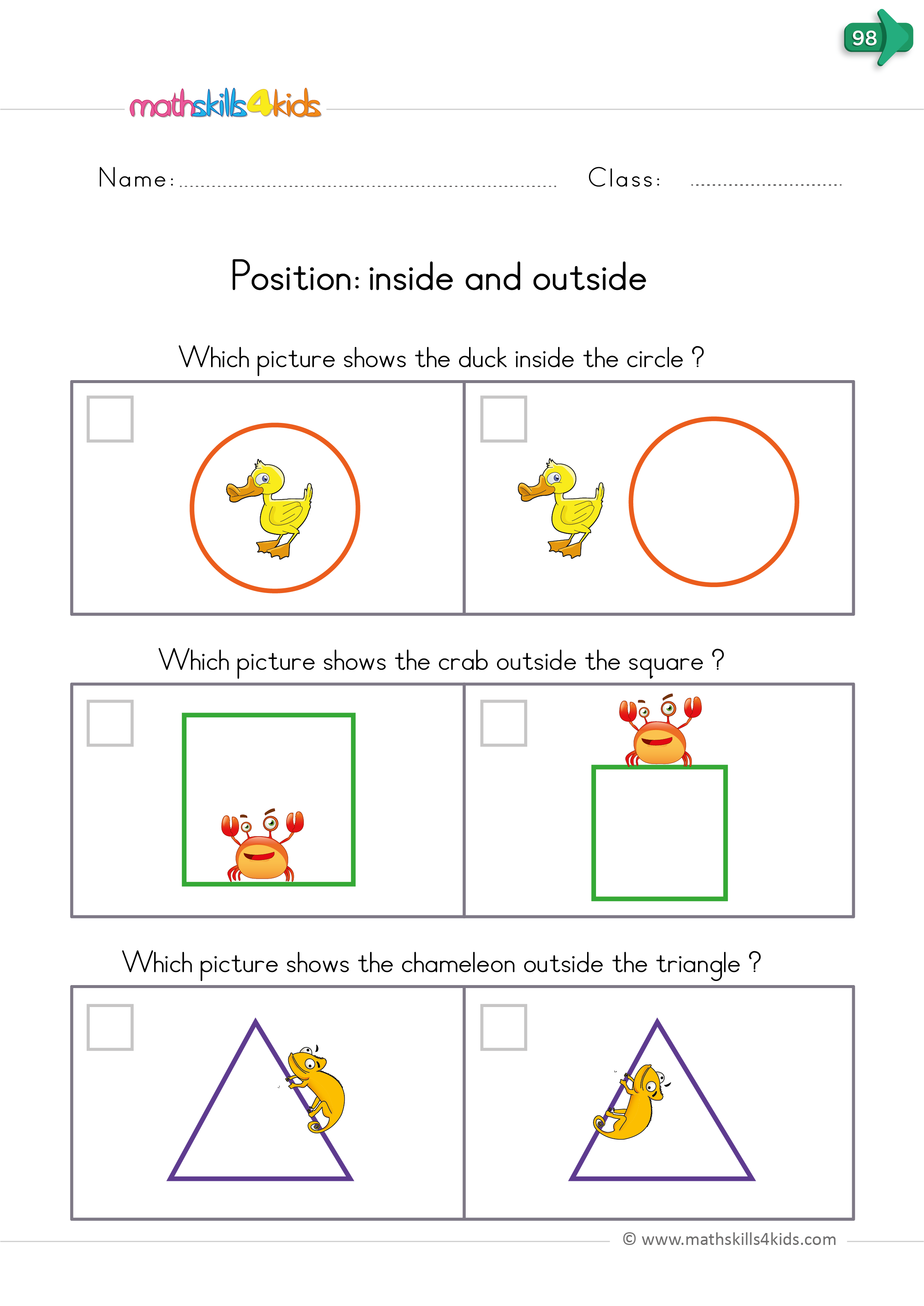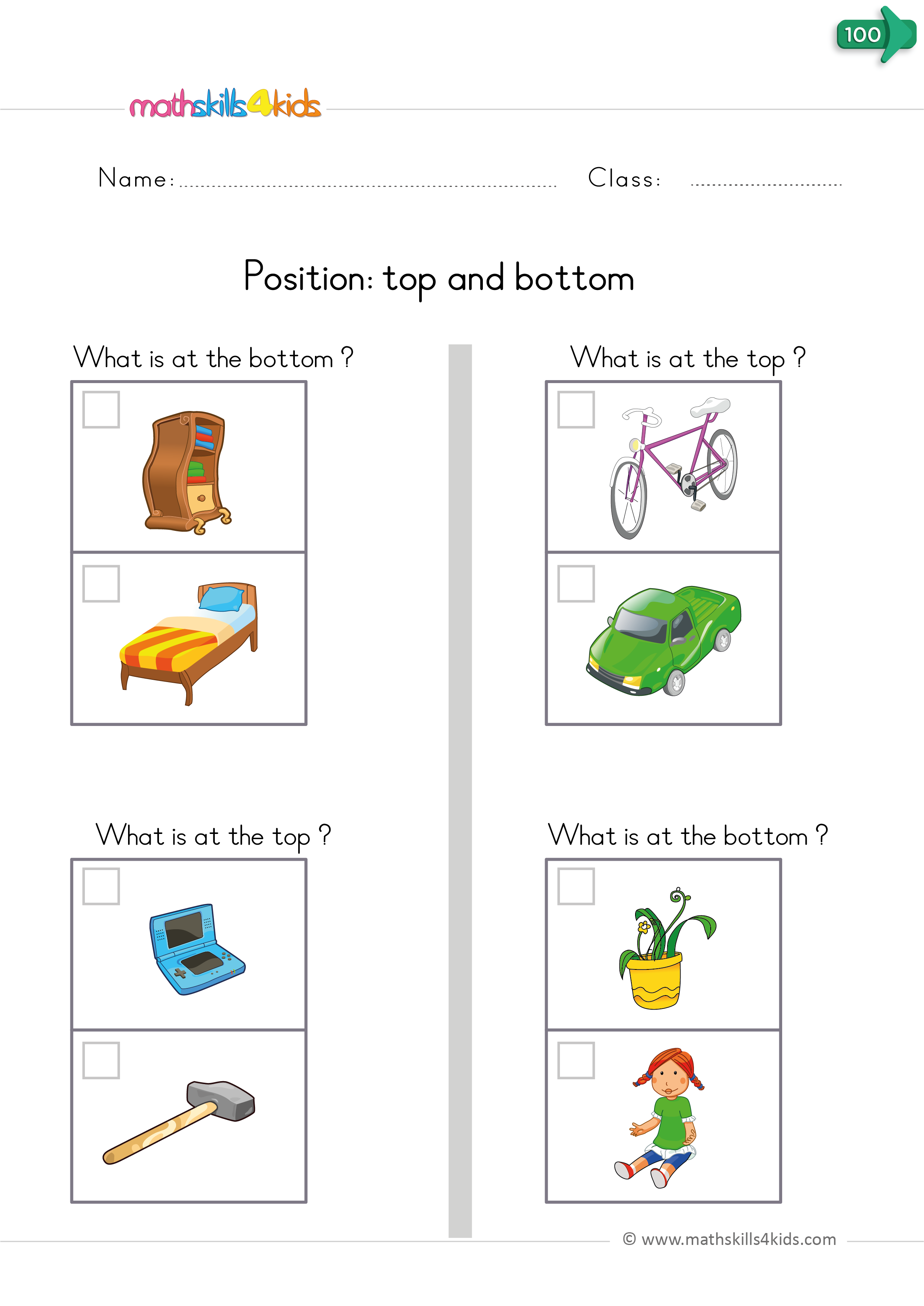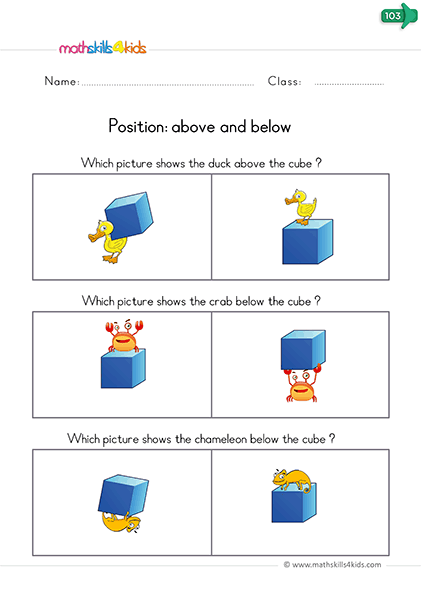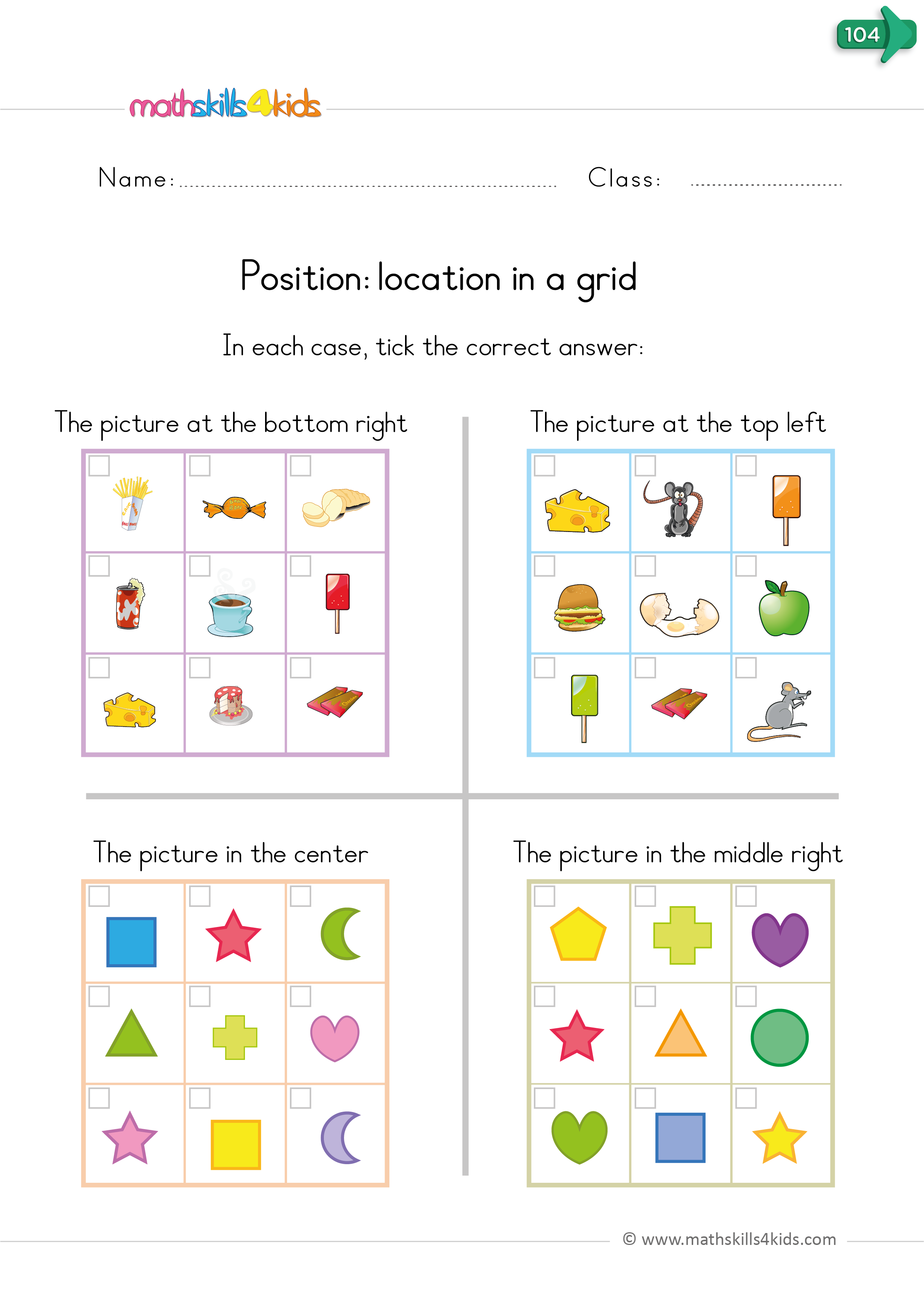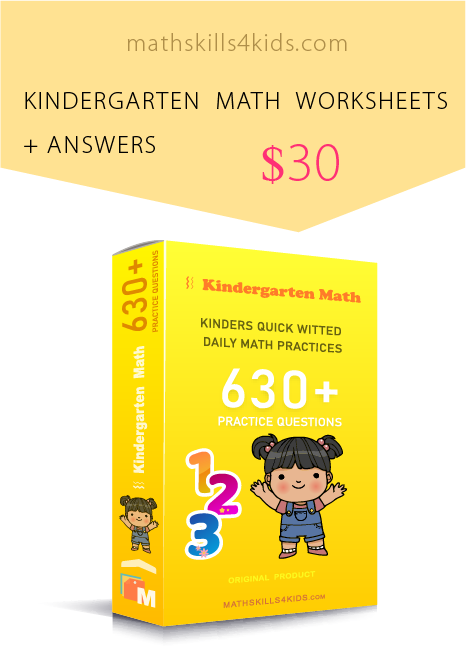Teaching positional words to kinders: worksheets and activities
If you're looking for fun worksheets and activities to teach positional words to your kinders, try this resource, and you won't regret it.
Positional words describe the location or direction of an object in relation to another object. For example, in, on, under, above, behind, next to, etc.
Positional words are essential for developing children's spatial awareness and logical thinking skills. They also help children follow directions and communicate their ideas more clearly and accurately.
-
In this resource, however, we'll share some fun and effective ways to teach positional words to kindergarteners, like using simple positional words worksheets and more. These methods will help your students learn and practice positional words in various contexts and situations.
Introduction to positional words
Before introducing positional words to your students, you must ensure they have a basic understanding of the concepts of space and direction. You can do this using concrete objects and manipulatives, such as blocks, toys, shapes, etc.
You can also use your body parts and movements to demonstrate the meaning of different positional words.
For example, you can show your students a toy car and a box and ask them to place the car in different positions relative to the box. You can say things like "Put the car on the box," "Put the car under the box," "Put the car next to the box," etc. You can also ask them to describe where the car is using positional words. You can repeat this activity with different objects and positional words until your students are familiar with them.
You can also use worksheets to introduce positional words to your students. Worksheets are a great way to reinforce what they have learned and check their understanding. You can use worksheets with pictures of objects in different positions and ask your students to circle or color the correct positional word. You can also use worksheets that have sentences with missing positional words and ask your students to fill in the blanks.
-
BROWSE THE WEBSITE
-
DOWNLOAD FREE WORKSHEETS
-
-
K- MATH TOPICS
- Learn to count up to 3
- Counting from 1 to 5
- Count up to 10
- Learn to count up to 20
- Counting to 100
- Skip counting
- Measurement
- Sum and difference
- Comparison
- Patterns
- Addition up to 5
- Addition up to 10
- Subtraction up to 5
- Subtraction up to 10
- 2D shapes
- Introduction to symmetry
- Position
- Fractions
- Time
- Classify
- Data and graph
- Probability
- 3D shapes
-
-
Hands-on activities to reinforce understanding
After introducing positional words to your students using concrete objects and worksheets, you can use hands-on activities to reinforce their understanding and make learning fun and engaging. Hands-on activities allow your students to apply what they have learned in real-life situations and contexts.
They also help your students develop fine motor skills, creativity, and problem-solving skills.
Here are some examples of hands-on activities that you can use or create for your students:
- Treasure hunt: In this activity, you hide some objects or treats around the classroom or playground and give your students clues using positional words. For example, you can say, "The treasure is under something blue," "The treasure is next to something round," etc. Your students must follow the clues and find the treasure using positional words.
- Simon says: In this activity, you give your students commands using positional words, and they must follow them. For example, you can say, "Simon says touch something above your head," "Simon says stand behind your chair," etc. Your students have to do what you say only if you start with, "Simon says. " If you don't say, "Simon says, "they have to stay still. If they make a mistake, they are out.
- Build a scene: In this activity, you give your students materials, such as paper, scissors, glue, crayons, etc., and ask them to build a scene using positional words. For example, you can ask them to build a farm scene with animals and plants in different positions. You can also give them some prompts or questions using positional words to guide them. For example, you can say, "Where is the cow?", "What is above the barn?" etc.
-
Printable worksheets for practice
One of the best ways to teach positional words is through hands-on activities involving movement and object manipulation. However, you may also want to use some positional words printable worksheets for practice and reinforcement. That's why we've created a set of free worksheets that you can download and use with your students.
These worksheets cover the following positional words: - Inside and outside - Left and right - Top and bottom - The middle position - besides and far from - Above and below - In front and behind - Location in a grid practice.
Each worksheet has a simple and colorful design that will appeal to your kindergarteners. They must follow the instructions and draw or color the objects according to their position.
For example, in the worksheet for inside and outside, they will have to draw a circle around the objects that are inside the house and a square around the objects that are outside the house.
These worksheets are great for independent work, homework, or assessment. You can also use them as a springboard for more discussion and exploration of positional words.
For example, you can ask your students to name more objects inside or outside the house or act out different positions with their bodies or toys.
-
Incorporating positional words into everyday activities
Another way to teach positional words to kindergarteners is to incorporate them into everyday activities and routines. This will help your students learn positional words in a natural and meaningful way. It will also help them transfer their knowledge to different situations and contexts.
Here are some examples of how you can incorporate positional words into everyday activities and routines:
- During circle time: You can use positional words when you greet your students or ask them questions during circle time. For example, you can say, "Good morning, Sarah! You are sitting next to John today.", "Who is sitting behind David?" etc.
- During snack time: You can use positional words when you serve snacks or drinks to your students or ask them to help you during snack time. For example, you can say, "Please put your cup on the tray.", "Can you pass me the napkins under the table?" etc.
- During story time: You can use positional words when you read stories or books to your students or ask them questions about them during story time. For example, you can say, "Look at this picture. Where is the mouse?", "What is happening behind the door?" etc.
- During clean-up time: You can use positional words when you ask your students to clean up their materials or toys after an activity or playtime. For example, you can say, "Please put your scissors in the box.", "Please put your blocks on the shelf.", etc.
-
Assessment and tracking progress
Finally, you must assess and track your students' progress in learning positional words throughout the year. This will help you identify their strengths and weaknesses and plan appropriate instruction and intervention accordingly.
You can use various methods and tools to assess and track your kid's progress in learning positional words, such as:
- Observations: You can observe your student's behavior and performance during different activities and routines that involve positional words. You can take notes or use checklists or rubrics to record your observations.
- Portfolios: You can collect samples of your student's work demonstrating their understanding and use of positional words, such as worksheets, drawings, crafts, etc., and put them in portfolios.
- Tests: You can administer tests or quizzes that measure your student's knowledge and skills related to positional words at regular intervals throughout the year.
- Self-assessment: You can ask your students to reflect on their own learning and progress related to positional words using self-assessment tools such as smiley faces or thumbs up/down.
Enhance use of daily interactive positional words – fun position vocabulary worksheets for kinder
Help kids enhance use of daily interactive positional words with these fun position vocabulary worksheets for kinders.
Given that playing with real objects are an effective way to foster mathematical concepts, our fun, clear and visual resource will entice kids to an easy understanding of how and when to use positional words appropriately.
We’ve used in most cases, toy cars, teddy bears, bed, cupboard and many other objects place in technical positions. As such, kids will be expected to determine whether objects are inside or outside; top or bottom; bottom right, top left, center or middle right.
Example - position: top and bottom - What is at the bottom?
Before we start figuring out where objects are being positioned, let’s discover one secret for this concept. This secret is simply a mastery of positional words and their opposites.
Some of the word – opposites are:
- Inside – outside
- Top – bottom
- Right - left
Now following the exercise position: top and bottom – what is at the bottom? An object is either at the top, or at the bottom, wherein top means up, whereas bottom means down.
-
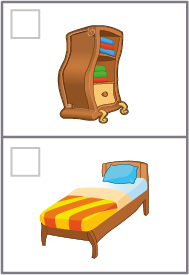
-
In this worksheet, given that the cupboard is up, and the bed is down.
What is at the bottom?
“Down” is same as “bottom”.
The object down is the bed. Therefore bed is at the bottom.
Very good! You choose the correct answer by placing a tick ( √ ) on the small box beside the correct object.
-
Thank you for sharing the links of MathSkills4Kids.com with your loved ones. Your choice is greatly appreciated.
Teaching positional words to kindergarteners is essential to their early math education. It helps them develop spatial awareness and logical thinking skills for later math learning. It also helps them communicate their ideas clearly and follow directions effectively.
Using various methods and strategies, such as concrete objects, worksheets, hands-on activities, everyday activities, assessment tools, etc., will make learning positional words fun and meaningful for your kindergarteners.
Happy learning!
Useful links
Position Worksheets | easyteacherworksheets.com:
https://www.easyteacherworksheets.com/math/kindergarten-relativeposition.html
Positional Words Worksheets | englishworksheetsland.com:
https://www.englishworksheetsland.com/position.html
